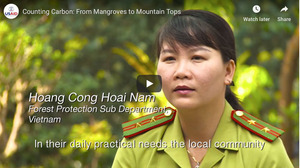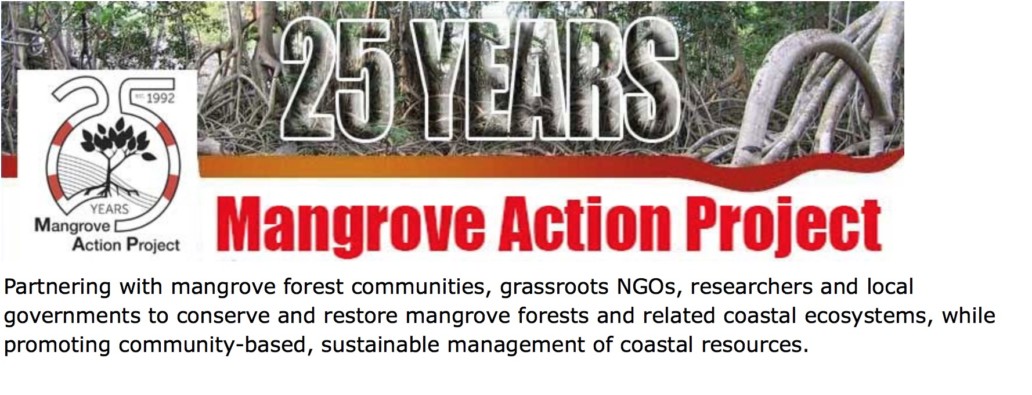Oil palm expansion in the Philippines leading to illegal deforestation and rights violations 
PHILIPPINES – In the province of Palawan, indigenous communities and civil society have denounced illegal clearing of pristine forests and indigenous rights violations by oil palm companies. Palawan, the Philippines’ westernmost province and known as the country’s last ecological frontier, is a UNESCO Biosphere Reserve, which requires the province to promote a mix of conservation and sustainable development in dialogue with local communities. However, indigenous leaders and activists who have spoken with IDM tell a story that is far from this ideal. In its latest annual bulletin, the Coalition Against Land Grabbing (CALG), a local collective of indigenous peoples affiliated with the Global ICCA Consortium, said that oil palm companies have violated environmental, health and safety laws and regulations, as well as indigenous peoples’ rights. “Oil palm is destroying Palawan’s forests, encroaching on ancestral domains and, increasingly, threatening the indigenous peoples’ food security,” the NGO said. Oil palm companies operating in the province include Palawan Palm & Vegetable Oil Mills Inc (PPVOMI), a Singaporean-Pilipino joint venture that sells all its production to its sister company Agumil Philippines Inc (AGPI). CALG told IDM that information it has obtained from industry sources reveals that kernel and crude palm oil are being shipped from Palawan to refineries in Sabah, Malaysia, and that 70 percent of the total production is exported to Singapore, China and Malaysia. This bluntly contrasts with the government’s initial commitment to produce healthy and cheap palm oil for local consumption.
READ MORE AFRICA
The fate of unique species in Tanzania’s coastal forests hangs in the balance
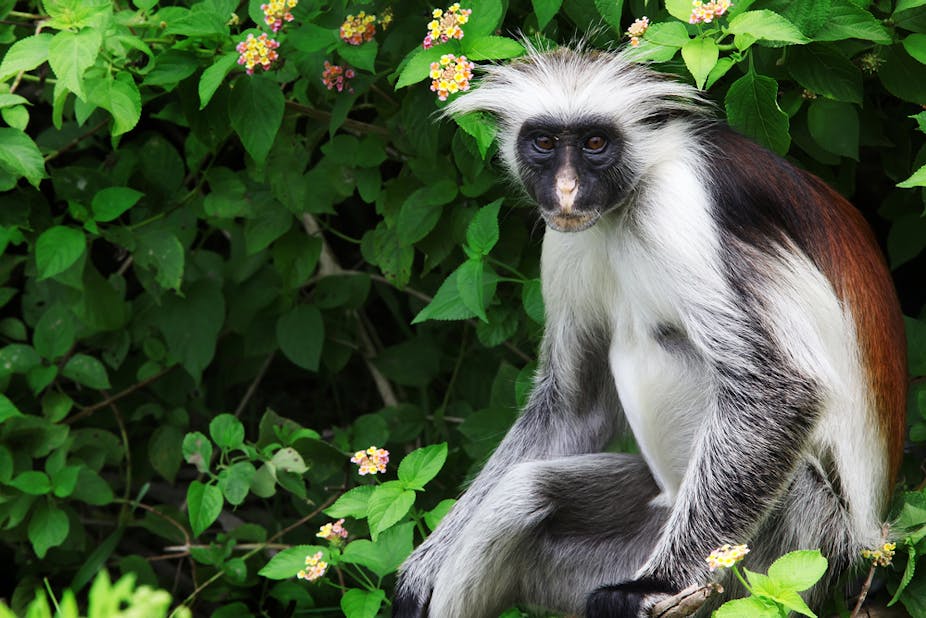
TANZANIA – Tanzania is known for its tapestry of lush forests, expansive grasslands and tropical beaches, and abundant and diverse wildlife. Its coastal forests are part of the Coastal Forests of Eastern Africa biodiversity hotspot – a place recognized for its wealth of wildlife but threatened with destruction, making it a high priority for conservation efforts. These forests are home to hundreds of endemic plant and animal species – ones that aren’t found anywhere else in the world. For example, there are five endemic mammals – including the Zanzibar Red Colobus – five endemic birds, six endemic amphibians and three endemic reptiles, as well as 325 endemic plants. More than 300 other species are shared only with the nearby Eastern Arc Mountains. In our paper we found that biodiversity – and the level of endemic species – is exceptional by global standards. READ MORE
ASIA
Editor's note – This is the reason why farmers will keep planting more oil palm ……artificial incentives. The environment loses, mangroves may suffer, more abandoned shrimp ponds planted into oil palm instead of being restored to mangroves & the consumer pays more for electricity.
Ministry speeds up palm oil plan

THAILAND – The Energy Ministry is speeding up a plan to purchase a new block of 200,000 tonnes of crude palm oil after the cabinet acknowledged the measure on Tuesday. Energy Minister Siri Jirapongphan said the first batch, totalling 100,000 tonnes, should be purchased within 15 days. The state-run Electricity Generating Authority of Thailand (Egat) has been ordered to buy 200,000 tonnes of crude palm oil. It will pay for the first volume to extract oil within seven days. "Egat will announce other details on its website," Mr Siri said. He said the Commerce and Interior ministries will start to check the stock of crude palm oil within two weeks. Egat will invite owners of oil extraction plants to propose their sale prices next Wednesday. "The first shipment is expected to start from May 20," Mr Siri said. READ MORE
Why Myanmar villagers still engage in illegal logging of mangroves

MYANMAR – In Myanmar, mangroves have disappeared at an unprecedented clip. The rate of deforestation in the country is the highest in Southeast Asia, according to research published in the Proceedings of the National Academy of Sciences in 2016. U Htay Lin, secretary of the Mangrove Service Network, an environmental organization based in Yangon, Myanmar’s commercial capital, estimates that only 20 percent of the mangroves in the Irrawaddy Delta remain; most have been cleared for aquaculture or rice paddy fields. Those that survive are in forest and wildlife reserves near the city of Bogale — just a three hour boat ride from Chaungbyaegyi. To save the remaining mangroves, the Myanmar government issued a logging ban in 2014. Despite that, illegal logging persists. One sentiment that I heard repeatedly from villagers who live outside the towns in the delta is that they need mangrove wood to survive. To understand how most people in the Irrawaddy live, and why illegal logging of mangroves persists, I decided to follow U Khin Win and U Tin Hla into the mangrove forest. READ MORE
Controversial aquaculture projects threaten Myanmar’s remaining mangroves

Myanmar – Myanmar has lost 80 percent of its original mangrove cover; much of what remains is located in the southern province of Tanintharyi. But in addition to illegal logging of mangroves for charcoal and firewood, aquaculture is a recent development that also threatens mangrove ecosystems. A few years ago, a businessman named U San Maung obtained approximately 200 hectares (500 acres) of land in Kala. He bought much of the forest land from nearby villagers and razed the remaining mangrove forest. U San Maung had plans to develop it into an aquaculture facility to produce shrimp to be sold to Thailand, where seafood fetches a higher price than locally. Since shrimp farming and aquaculture require saltwater — and mangroves grow in regions where saltwater and freshwater meet — opportunities for profit often conflict with ecological resources. Mangroves in other areas of Myanmar such as in the Irrawaddy Delta and western Rakhine state have been cleared for aquaculture, but the development of a shrimp farm in the southern province of Tanintharyi is new. READ MORE
In Indonesia, bigger catches for a fishing village protecting its mangroves

INDONESIA – Here in West Kalimantan, one of 34 provinces in the world’s largest archipelagic nation, mangrove forests occupy approximately 1,000 square kilometers (386 square miles) and are home to around three-quarters of all Indonesian mangrove species. Mangrove cover remains fairly thick in Kubu Raya, the coastal district south of the provincial capital, Pontianak, where you find the Nibung River. But the distinctive trees with their above-water breathing roots have faced sustained pressure in Sungai Nibung due to settlement building and demand for firewood. In other nearby villages, mangrove dieback has proved extensive. Anecdotal reports indicate fishermen there are struggling. In 2017 the Sungai Nibung village government began closing tributaries to any extractive practices. The closure was decided after consultation with the village’s natural resources co-op, the forest management office, fishermen and Planet Indonesia. The local government established patrol teams to monitor and enforce the moratorium. On one occasion, a patrol arrested someone from a nearby village, but decided to let them go without sanction. “Maybe they didn’t know,” says Planet Indonesia’s Riyansyah. “But now they do know about the open-close system, the news should spread.” READ MORE
The Tough Sell of Turtle-Saving Tech
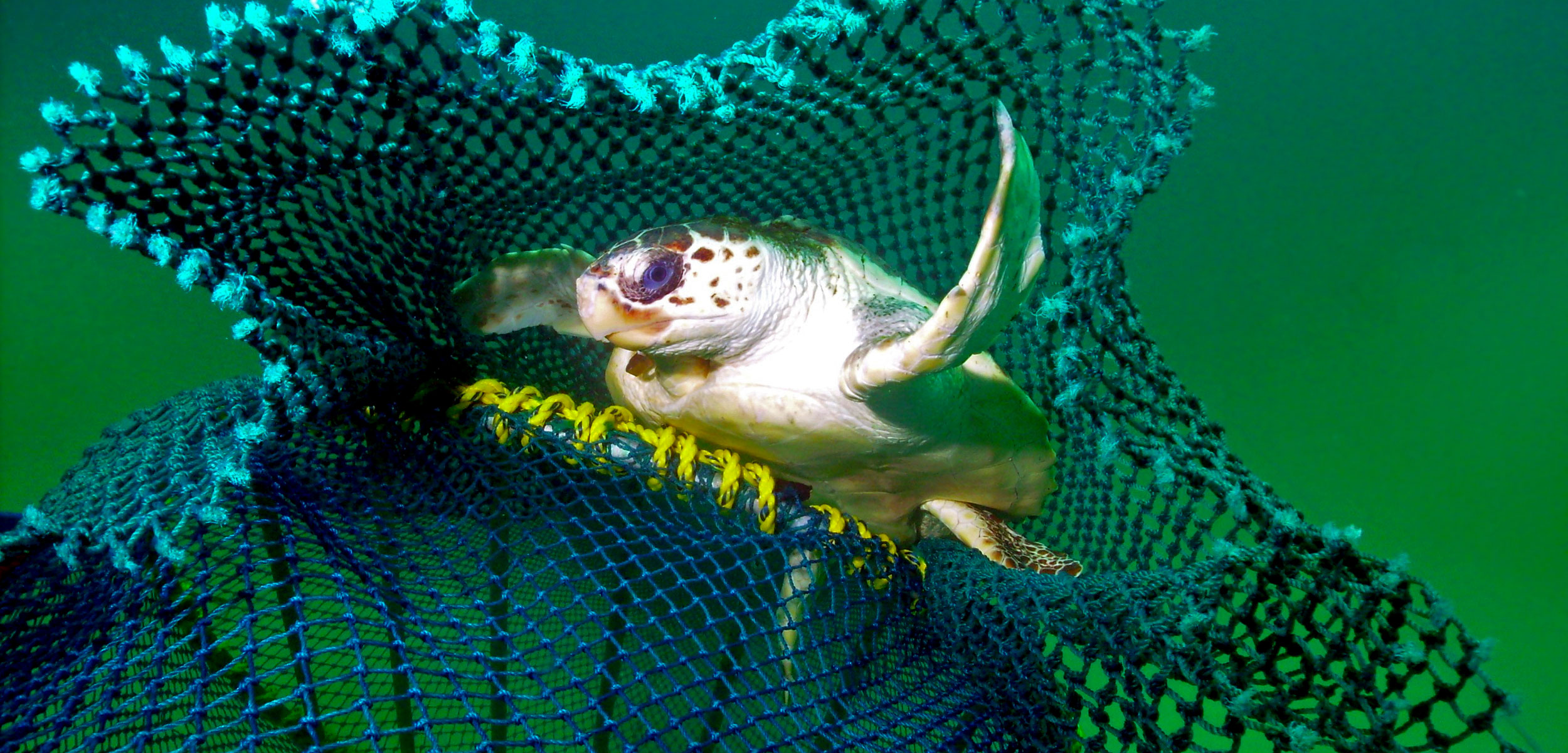
MALAYSIA – Sea turtle excluder devices are simple. Getting them adopted is anything but. Fisherman Firman bin Jawasa remembers the catch well. He was 20 years old and trawling for shrimp with his uncle in the coastal waters off northern Borneo, Malaysia, when something in their heavy net started thrashing. Caught inside was a frenzied sea turtle, snapping at the net. The turtle was too difficult to handle so they left the net in the water hoping the meter-long creature would escape. Soon after, to Firman’s relief, the turtle bit through the net and fled. Eighteen years later, Firman is now the captain of his own shrimp trawler. In 20 years of fishing he says he has caught only that one turtle, but a 2007 survey of fishermen in his home state of Sabah suggests that each year almost 4,500 turtles accidentally drown in shrimp trawler nets. Sea turtles are protected in Malaysia, and the law prohibits harming or keeping them without permits. Eager to avoid any hassle, most fishermen don’t report by-catch, so it’s almost impossible to know exactly how many turtles die in this way.READ MORE
AMERICAS
Humans Are Speeding Extinction and Altering the Natural World at an ‘Unprecedented’ Pace

U.S. – Humans are transforming Earth’s natural landscapes so dramatically that as many as one million plant and animal species are now at risk of extinction, posing a dire threat to ecosystems that people all over the world depend on for their survival, a sweeping new United Nations assessment has concluded. As a result, biodiversity loss is projected to accelerate through 2050, particularly in the tropics, unless countries drastically step up their conservation efforts. Humans are producing more food than ever, but land degradation is already harming agricultural productivity on 23 percent of the planet’s land area, the new report said. The decline of wild bees and other insects that help pollinate fruits and vegetables is putting up to $577 billion in annual crop production at risk. The loss of mangrove forests and coral reefs along coasts could expose up to 300 million people to increased risk of flooding. “It’s no longer enough to focus just on environmental policy,” said Sandra M. Díaz, a lead author of the study and an ecologist at the National University of Córdoba in Argentina. “We need to build biodiversity considerations into trade and infrastructure decisions, the way that health or human rights are built into every aspect of social and economic decision-making.” READ MORE
These Scientists Did More Than Tell Us We Were Doomed

U.S. – "Coastal marine ecosystems are among the most productive systems globally, and their loss and deterioration reduces their ability to protect shorelines, and the people and species that live there, from storms, as well as their ability to provide sustainable livelihoods (well established).” Wetlands, in particular, are also fantastic at sequestering carbon from the atmosphere. Protecting these landscapes would probably mean protected status for landscapes like coastal mangrove forests and an end to beachfront resorts and industrial development on the coastline. It could also lead to helping coastlines and wetlands rewild themselves before hurricanes come along and do it by fiat, with a lot more property damage.At several points in the summary, the IPBES describes “ever-increasing material consumption” as a concept that is incompatible with leading a good life in the future. Instead, they say, addressing inequality, lowering consumption, expanding access to education, and supporting sustainable technology are our best bet for relieving the pressures that lead to illegal logging, poaching, overfishing, and generally living beyond our means. READ MORE
GLOBAL
Islands of nature in a sea of decline – indigenous and local knowledge, action and contributions key to saving the world’s nature
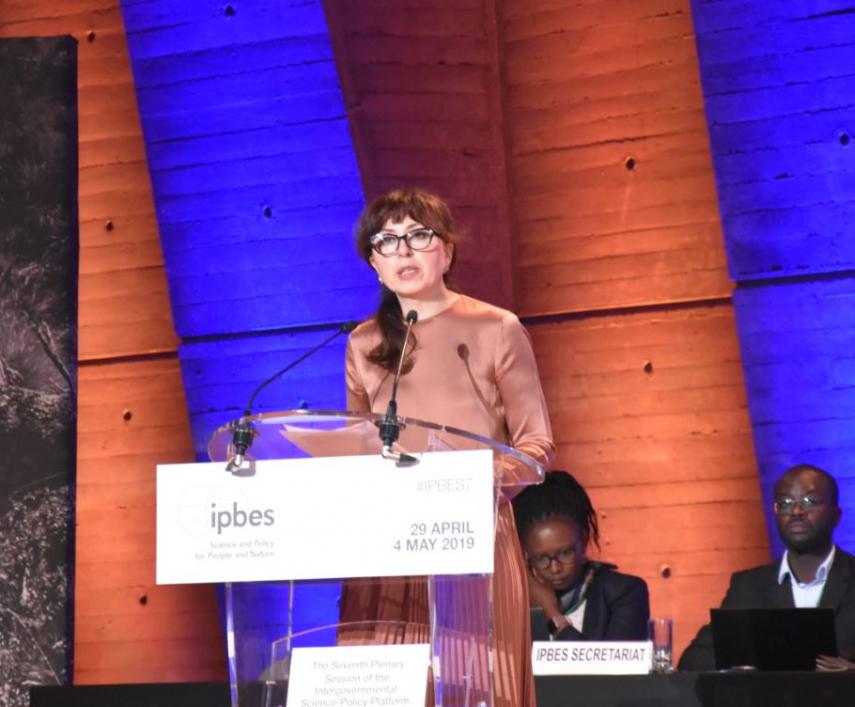
GLOBAL – Nature is decreasing worldwide at an alarming rate – it is time to look to indigenous peoples to help find the solution. This was one of the key conclusions reached in the first global assessment of nature and biodiversity, released today (6 May) in Paris. "We are at a historical crossroads for humanity,” said Cristiana Paşca Palmer, UN Assistant Secretary-General and Executive Secretary of the UN Biodiversity Convention, speaking in Paris this week at the closing of the IPBES 7 plenary session. “We are counting on everyone everywhere and especially indigenous peoples & local communities who are closest to the land, whose survival is most at risk, and whose traditional knowledge and practices can show us all the way forward," she said.The report shows that the situation of global nature looks dire, but there are glimmers of hope that could lead to a reverse in this trend. Scientists, governments and civil society agree – the answer lies in knowledge, both in ‘traditional’ science and also with knowledge generated by indigenous peoples and local communities, who have safeguarded nature for millennia. “The combination of scientific evidence and indigenous and local knowledge makes this report much richer,” said Anne Larigauderie, executive secretary of IPBES. In the largest and most comprehensive attempt to assess the state of our living planet, governments, scientists, civil society and indigenous peoples and local communities came together at IPBES7 and agreed that we are exploiting nature faster than it can renew itself. READ MORE
LAST WORD
Dear Mr. Alfredo Quarto
I am contacting you to mark World Migratory Bird Day 2019, which will take place on Saturday May 11, 2019. The purpose of this day is to show the importance of migratory birds, the threats they face and how to protect them and their habitats.
For this occasion, we have created a set of open source resources available in www.connect2earth.org. The theme this year is dedicated to #StopPlasticPollution #WorldMigratoryBirdDay.
We encourage you to regularly visit the website # Connect2Earthto find more resources for other open source prepared theme days, as the next International Biodiversity Day or World Environment Day. # Connect2Earthis a global campaign designed to spread the message about why #NatureMatters. When creating resources for different theme days throughout the year, WWF helps expand communications global biodiversity, increase awareness of the values of biodiversity and inform people about the steps they can take to conserve and use it sustainably.
Open source resources have been made possible by the generous support of the German Federal Ministry for the Environment, Nature Conservation and Nuclear Safety with funds from the International Climate Initiative (International Climate Initiative – ICI).
Please do not hesitate to contact if you have questions.
Thanks in advance!
Sincerely,
Nina Gabrych
International Biodiversity Project Manager Communication and Policy
WWFGermany
Reinhardtstr. 18
10117 Berlin
Tel .: +49 (0) 0 30,311,777
Direkt: +49 (0) 30311777217
Nina.Gabrych@wwf.de
Project info: Scaling up Biodiversity Communication for Achieving Aichi Target 1 (Summary – https://bit.ly/2Trug6t).
IN MEMORIAM

Dr. Lew Young
I am very sad to hear of Lew's passing, and wish to offer our deep condolences for this loss, for he was a wonderful person and devoted ecologist. I will always remember him from my infrequent visits to Mai Po reserve in Hong Kong! He will be sorely missed!
~Alfredo Quarto MAP
The Ramsar Secretariat is deeply sad to announce that Dr. Lew Young passed away on 5th March 2019 while on mission in Beijing in his capacity of CEO of the East Asian-Australasian Flyway Partnership. He was 60 years old. READ MORE
Back to Top















